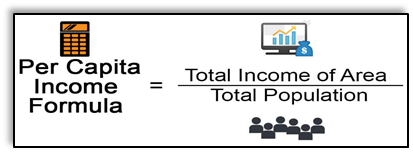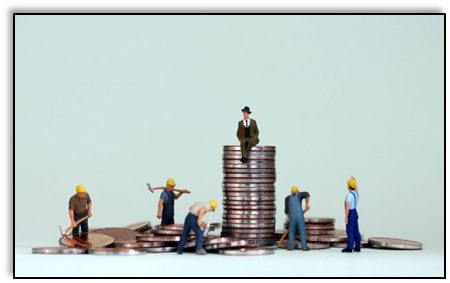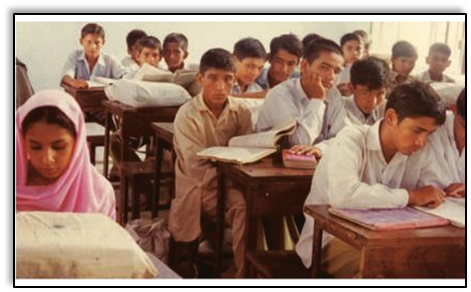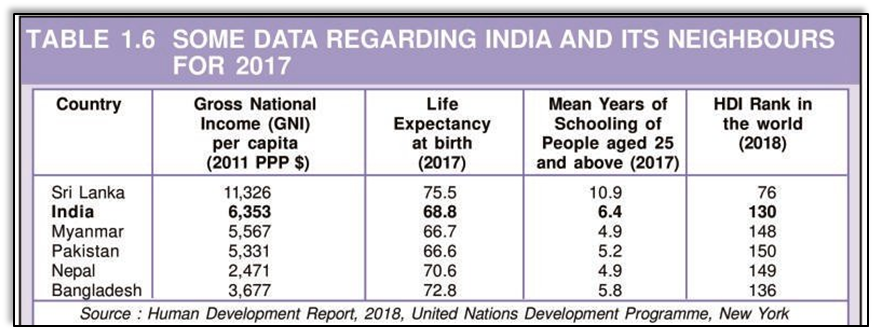Different types of development
- Books Name
- Understanding Economic Development Class-10
- Publication
- PathSet Publications
- Course
- CBSE Class 10
- Subject
- Economics
- Development involves thinking about various questions that affect the way we live as an individual or in society.
- It aims at devising ways in which we can work towards achieving these goals.
DIFFERENT TYPES OF DEVELOPMENT

- The notion of development is not the same for everyone. We seek things that play an instrumental role in fulfilling our aspirations and desires.
- Therefore, different persons can have different developmental goals.
- It is also possible that the development goals of two or more individuals or groups are conflicting.
- Hence, what may be developed for one may not be developed for the other. It may even be destructive for the other.
INCOME AND OTHER GOALS
- One thing that is usually a common development goal for everyone is regular work and decent wages. People want more income.
- However, other things people desire are respect, freedom, security, etc.
- The quality of our life depends on both material and non-material things.
- Hence, for development, people look at a mix of goals.
National Development
- Books Name
- Understanding Economic Development Class-10
- Publication
- PathSet Publications
- Course
- CBSE Class 10
- Subject
- Economics
NATIONAL DEVELOPMENT
- Different individual goals lead to different notions of national development as well.
- National development involves thinking about how to ensure equality for all, resolve conflicting goals, benefit a large number of people, etc.
State vs national development
- Let us see how we can distinguish some countries as developed and under-developed.
- Usually, we take one or more important characteristics of countries and compare them based on these characteristics.
- For comparing countries, their income is considered one of the most important attributes.
- Countries with higher income are considered more developed than those with less income. The rationale behind this is that higher-income means more of all things human needs.
- The total income of a country is the income of all residents of a country. However, we cannot measure development using total income because the population of countries varies. This will not tell us what an average person is likely to earn.
- Therefore, we use the concept of average income. It is defined as the total income of a country divided by its total population. It is also called per capita income.

- According to World Development Reports brought by World Bank, India comes in the category of low middle-income countries.
- While averages are used for comparison, they also hide disparities.
- Even if two countries have an identical average income, it is possible that in one country, there is equitable distribution while in the other country most population is poor while a minuscule of it is rich.

Criteria for development
- Books Name
- Understanding Economic Development Class-10
- Publication
- PathSet Publications
- Course
- CBSE Class 10
- Subject
- Economics
CRITERIA FOR DEVELOPMENT
- As we discussed earlier, apart from income, people have other goals such as security and freedom. Let us look at various indicators that can help to measure development:
1. Infant Mortality Rate (IMR): It indicates the number of children that die before the age of one year as a proportion of 1000 live children that are born in that particular year.
2. Literacy Rate: Measures the population of the literate population in the 7 and above age group.
3. Net Attendance ratio: Total number of children of age 14 and 15 years attending school as a percentage of the total number of children in the same age group.
- Thus, a state or country might have a good per capita income but perform poorly in the criteria mentioned above.
Government and public facilities
- Money in our pocket cannot buy us all the goods and services that we may need to live well.
- Income itself is not a complete adequate indicator of material goods and services a citizen can use. It cannot buy us a pollution-free environment or get us unadulterated food or medicines.

- collectively. More children can go to high schools if the state provides adequate facilities to its people.
- Kerala has a low infant mortality rate because it has an adequate provision of basic health and educational facilities.
- To check if we are properly nourished, we calculate Body Mass Index or BMI. It is calculated by dividing the weight (in kgs) by the square of height (in meters)
- Human Development Report: After realizing that only per capita income is an inadequate criterion to measure development, we made a small list of other important criteria. Over the past decade, health and education indicators have come to be widely used as a measure of development. The human development report published by UNDP gives an account of development using these measures.

- Here, Life Expectancy at Birth means the average expected length of life of a person at the time of birth.
- HDI stands for Human Development Index.
- Per capita income is calculated in dollars for every country to ease comparison between them.
Sustainability of Development
- Books Name
- Understanding Economic Development Class-10
- Publication
- PathSet Publications
- Course
- CBSE Class 10
- Subject
- Economics
SUSTAINABLE DEVELOPMENT
- Since the second half of the twentieth century, a number of scientists are indicating that the present level of development is not sustainable.
- For example: At present, nearly 1/3rd of the country is overusing its groundwater reserve, which will exceed 60% of the country in the next 25 years. Groundwater is a renewable resource i.e. it can be replenished by nature. However, if the rate of using this resource exceeds the rate at which it is replenished, it will imply that we are overusing it.
- Non-renewable resources refer to those that will exhaust after years of use. Example: Coal and petroleum.
Making development a continuous process
- The consequences of environmental degradation are no more nation-specific.
- The sustainability of development is a new area that is being explored.
- Development is perennial. At all times, we have to figure out what we want and how to achieve it in a sustainable manner.


 PathSet Publications
PathSet Publications
